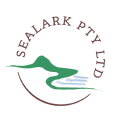Sealark appoints Hill Thalis to deliver Callala Bay masterplan design

Sealark has appointed one of Australia’s most-awarded architectural practices, Hill Thalis, to develop the masterplan design for its Callala Bay development on the NSW South Coast.
Sealark Managing Director Matt Philpott says the appointment of the leading architectural studio to the project demonstrates its commitment to quality and sustainability, and to ensure the masterplan design response is harmonious with the natural character of the site and the existing Callala Bay village.
“Hill Thalis is a top-tier architectural studio and the ideal design partner to create the most appropriate, compelling and beautiful masterplan for our Callala Bay development,” Mr Philpott says.
“It is imperative that we create a masterplan which complements the existing natural character of Callala Bay and its community in a way that respects its history, observes key elements like infrastructure, bushfire and traffic management, and which adds value in the future.
“Hill Thalis has the proven track record to not only understand but physically and socially interpret these foundational principles to deliver a vision we can be proud of,” he says.
With a diverse national portfolio ranging from new city districts to public places, infrastructure and active transport, adaptive reuse and more, Hill Thalis has extensive experience in the design of housing of all types, including affordable housing.
The company’s fingerprints are on some of Australia’s most awarded public projects, including Constitution Avenue and Campbell Section 5 in Canberra, Pirrama Park in Pyrmont, and, also on the NSW South Coast, Gerringong’s world famous Tasman Drive. The studio has won national competitions for the Sydney Olympic Village, Barangaroo and Kensington 2 Kingsford projects.
Hill Thalis Principal and Founder Philip Thalis says the masterplan design approach begins with taking the time to research and understand the place, including its “natural system”, existing flora and fauna communities, site topography, cultural value, water movements and more. The team will also take learnings from previous Callala Bay developments which all current residents call home.
“We are looking at local precedents, including early historic plans, the layout of Callala Beach, Callala Bay and Benton Sands to build upon past lessons to make a masterplan that feels connected to the natural setting,” Mr Thalis explains.
“Ecologists have been walking and mapping the site in fine detail, which is fundamental to framing an understanding of place. We are also being guided by NSW Government policies that require contemporary masterplans to prioritise landscape and culture, not only engineering and traffic.
“The masterplan is responding to important ecological elements, including orchids and hollow bearing habitat trees supporting local fauna. Endemic species from existing plant communities will inform the selection of trees in new streets and parks, we’re looking at opportunities to retain
mature trees and vegetation on street corners, while many existing plant communities will be retained within the large biodiversity site to the north.
“Social connection is another important consideration. We envisage convenient connections to the town centre and bay on foot or by bike, and a design which enables people, cars, cyclists and fauna to move comfortably through the site via a ‘green grid’ structure in which streets and parks are linked to the surrounding landscape and to the adjacent biodiversity site,” Mr Thalis says.
Another key principle informing the masterplan design includes the prioritisation of water and the treatment of water as a fundamental part of the place, by ensuring it is permitted to infiltrate the site’s soils to replenish vegetation, rather than all being piped into man-made systems.
“The masterplan design will also observe the site’s topography, especially its natural ridge. The highest point of the land will remain as a vegetated ridge, free of buildings, with buildings always subservient to landscape,” Mr Thalis says.
Finally, the masterplan will consider the recently released NSW Government Housing Low Rise Pattern Book, which Mr Thalis was involved in developing.
The NSW Government zoned the Callala Bay site for residential purposes in 2022 as “a matter of state and regional significance”, a zoning reconfirmed by the Minister for Planning and Public Spaces in September 2024.
The development will deliver up to approximately 380 land lots on completion, with a minimum of 10% to be gifted to a tier-1 Community Housing Provider for use as affordable housing.
With masterplan design work underway, Sealark anticipates unveiling the proposed design for the Callala Bay project for development approval in 2026.
An Issues and Opportunities survey for people to provide their initial thoughts on what they’d like to see in the development is open until Tuesday 23 December 2025.
